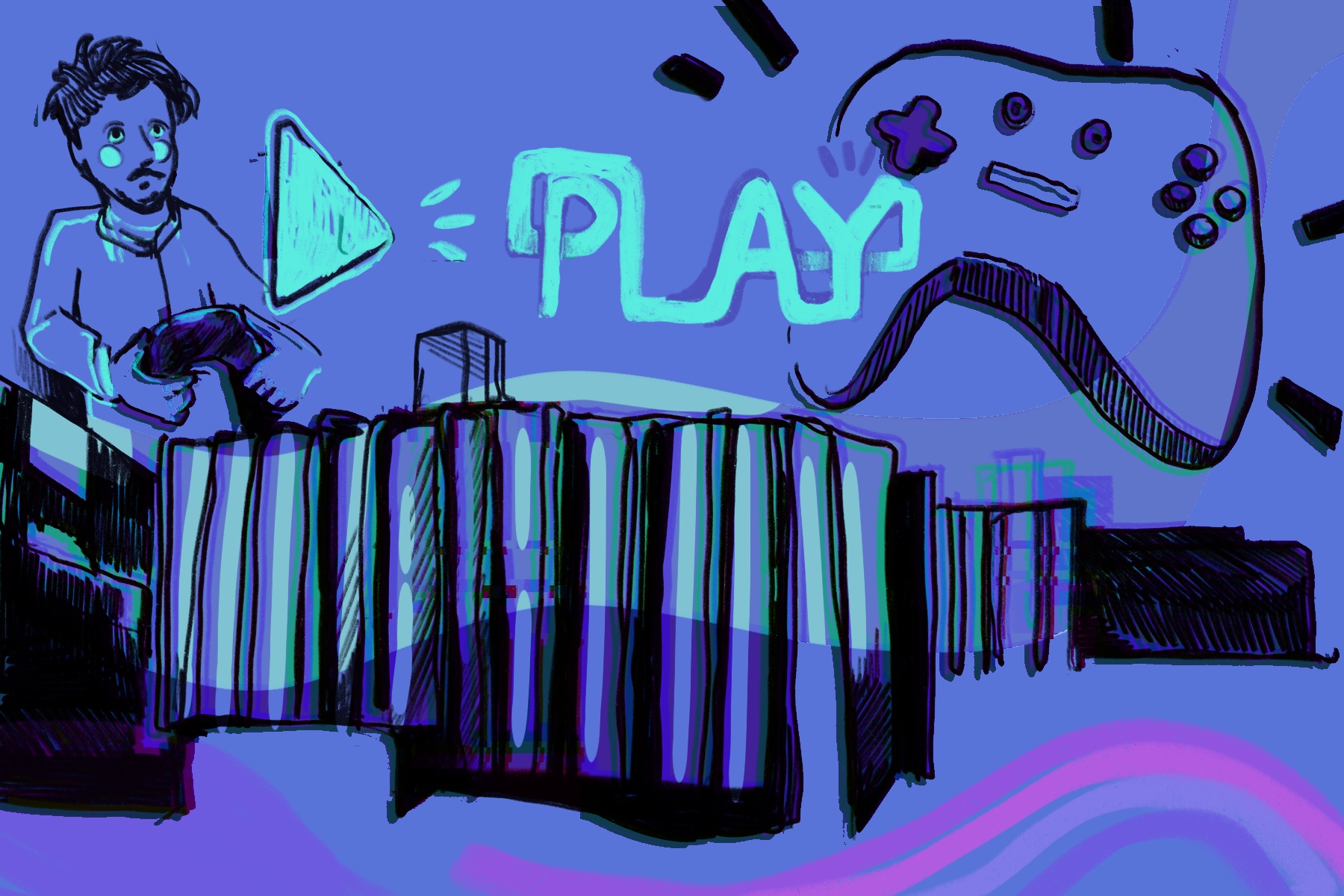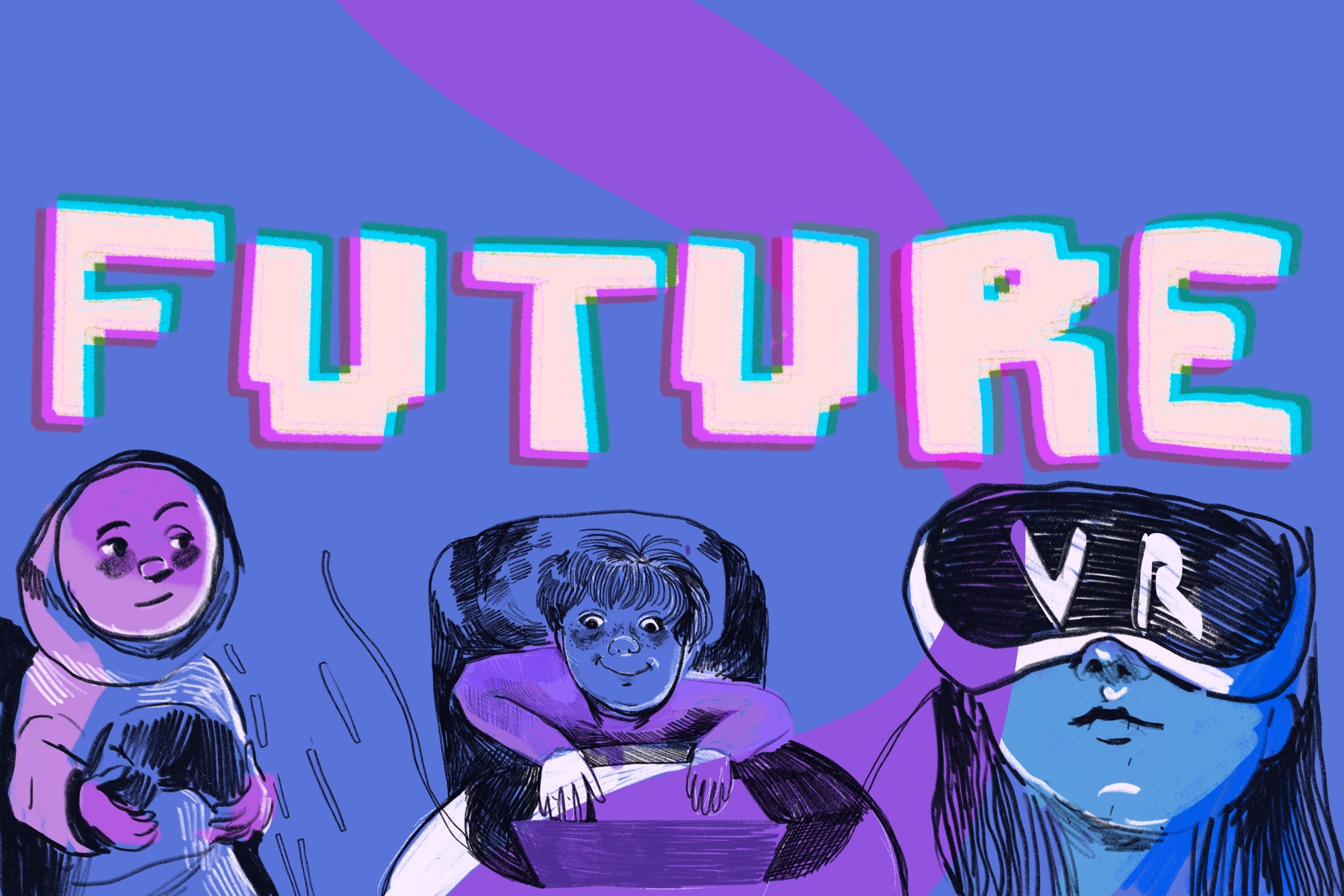Education systems around the world have had to rapidly adapt to changes in recent years.
Computers changed how students studied or took notes. Cell phones provided immediate access to a wave of data at the press of a button. In-depth mental health research fostered a new understanding of conditions like ADHD that can affect a student’s learning. COVID-19 required schools to quickly switch to online-only classes.
André Thomas, an architecture professor at Texas A&M University, claims educational video games could become the next widespread education movement. His motto is “every game is a learning game.”
Thomas is also the director and founder of the Learning Interactive Visualization Experience (LIVE) Lab, CEO of Triseum, a company that develops educational and entertainment games, and ex-head of graphics for EA Sports Football, a leading game developer.
Thomas and his team at LIVE Lab make video games that teach complex and nuanced procedures, skills and information to post-secondary students.
“You cannot play any game without first learning how to play,” Thomas said. “Any game that anyone plays anywhere on the planet needs to teach you something.”
One interactive game Thomas developed at Triseum allowed students to take on the role of a patron in Florence during the Renaissance to help them analyze art from that period.
Another project he worked on was a game called Variant: Limits, which taught students advanced calculus. The data Thomas collected for Variant: Limits showed that the game improved students’ grades in introductory calculus classes.
Video games are being used more often as educational tools at post-secondary institutions worldwide—including Carleton University. While Professor Thomas is confident in the power video games have in education, others—academics and laymen alike—are less certain.
The difference between educational and entertainment games
Whether someone considers themself to be a gamer or not, many have heard of Pong. It’s a simple table tennis game released in 1972 whose creation is often cited as the birth of the home video game industry.
Before Pong was released, the video game Oregon Trail was already being used in classrooms. This infamous game, launched in 1972, was designed to teach elementary school children about the harsh conditions American pioneers experienced. The feeling of dying of dysentery on the Oregon Trail is still remembered today by many players and is even referenced in shows like Brooklyn Nine-Nine.
“Even though educational games have been around longer … most people, when they think about games, they think about entertainment games,” Thomas said.

He said educational modes in games like Assassin’s Creed are a good start and more entertainment games could improve their reputation if they unite with educational games.
“I wish the entertainment games industry would do more for education. … If they just spent a fraction of their revenue on making educational games, we would be in a great place,” Thomas said.
Aubrey Anable disagrees. She’s a Carleton film studies professor, as well as the advisory editor for Camera Obscura and author of Playing with Feelings: Video Games and Affect. Anable suggested that if prominent game developers aren’t involved in the educational games sector, there is a reason.
“It’s probably because they don’t think they can make very much money from it,” Anable said. “I think that there are already so many interesting ways in which existing games can be used in an educational context to teach all sorts of things.”
According to her, some companies have made educational video games for decades but they haven’t gained traction because students think of the games as just more homework, an extension of school.
“[Students] can make a distinction between a game they play for homework and a game they play for fun,” she said. Anable suggested educators find ways to use existing, entertainment video games as teaching tools.
The debate over the effectiveness of video game learning
Dr. Jan Stasienko addressed Anable’s concern about boring, educational games in his paper ‘Why are they so boring?’ – educational context of computer games in design and research perspectives. Stasienko, a journalism and communication professor at the University of Lower Silesia, noted while young children are “not very picky” about the quality of their educational games, older players are more “sensitive to the disruption of games’ entertaining qualities.”
Stasienko’s research shows that a game cannot compromise fun for education. He suggests any time the designers want to put an “educational element” in the game, they need to ensure it’s still entertaining as well. Stasienko said making an educational game for older age groups is difficult for game designers as a result.
Thomas agreed with Stasienko that most educational games are made for young children, who care less about a game’s production quality. However, Thomas said he believes he can overcome the challenge of teaching older students via gaming by making high-quality video games that are comparable to those of EA and Ubisoft.
Though Anable said she fears students won’t be motivated because they know the difference between an entertaining game and an educational one, Thomas noted that students quickly grow bored when learning by conventional means.
Thomas argued that students will be “intrinsically motivated” to learn if they are trying to accomplish something within the game, whether that’s winning a fight, completing a puzzle or another goal entirely.
There have been studies in recent years that investigate whether or not video games are good educational tools. Some, such as Thomas’s research and a study by Sadaf Murad, a nursing professor from the University of Alberta, show benefits when using video games in education.
However, some studies are not as confident about video game usage and improved learning. A study from Varvara Garneli, an informatics professor at Ionian University in Greece, found significant positive changes in “the attitudes of the students toward learning” when using a video game, but identified “only minor differences in learning performances.”
David Thue, a Carleton information technology professor, said despite reliable virtual reality (VR) technology being relatively new, he is optimistic about its educational uses if the research is given more time to develop.
“A [VR] game can immerse you and cause the outside world to slip away,” Thue said. “If I want to be able to give someone an impression of how tall the tallest building in the world is, putting them in VR is going to be more powerful than putting it on a computer screen.”

Learning from failure
Video games can also teach life skills beyond the classroom. Anable is interested in how video games teach people to overcome failure.
“The promise that most video games implicitly make to players is that if we keep trying, we will get better and ultimately, we will succeed,” Anable said. “That movement through failure towards success is one of the fundamental pleasures of video games.”
Though many associate failure with negative emotions like guilt, anger, frustration and sorrow, Anable said failure is important for learning.
“The fear that gets attached to failure can be problematic and can inhibit people from trying new experiences and therefore, learning new things,” she said.
However, despite the benefits brought by learning to overcome fear, Anable said she fears that video games can reinforce “problematic assumptions” about what success and failure look like, rather than challenging them.
She said she considers the usual measure of success in video games—how aggressively you fight and how much wealth you accumulate—to be a narrow view of success and accomplishment. She suggested that video games would be beneficial for creating new models of what success looks like and how failure can be a positive experience.

What post-secondary institutions can do
Anable said she is pleased with the progress of using video games as an educational tool at post-secondary institutions. In her and her colleagues’ classes, she has seen more video games being used to encourage learning.
She said this progress is unavoidable at most post-secondary institutions since video games have become “the most popular media form of the century.” Anable said she expects this growth to continue. However, she said helping instructors learn about educational gaming is vital toward this growth.
When speaking to professors who don’t teach games, Anable often reassures them they don’t need to be a gamer to incorporate video games in lessons.
“[I’m] always trying to encourage my colleagues to get over their fear of embarrassing themselves in front of their students while they play a video game in class,” Anable said.
Meanwhile, Thomas is interested in showing teachers how books and games are simply tools for learning. He recalled occasions when he was asked what games teach students or whether he had a study to prove video games’ effectiveness in classroom environments.
He responds by asking to see a book that proves its own value as a teaching tool.
“[A book like that] doesn’t exist. I guarantee you … Yet, we all take it for granted … The book is a tool, the same as a game. The game is a tool,” Thomas said.
Both Thomas and Thue suggested ways teachers could use games to teach more creatively, even if the game isn’t designed to be educational. Thomas suggested that even inaccurate or unrealistic games can be useful—if a game claims to be historically accurate and it isn’t, teachers can ask their students to identify why.
One of the services Carleton offers is called the games collection through MacOdrum Library. Thue said teachers could give an assignment that would require students to explore this catalogue of games.
Thomas said he has hope that classrooms will learn to integrate video games in their curriculums.
“How do you learn to ride a bicycle?” he asked. “You can read about it, you can watch somebody else do it, you can watch a movie, you can hear somebody talk about it, but you aren’t going to learn through any of these methods, how to ride a bicycle.”
“The only way you will learn is by getting on the bicycle and riding it.”
Featured graphic by Sara Mizannojehdehi.





